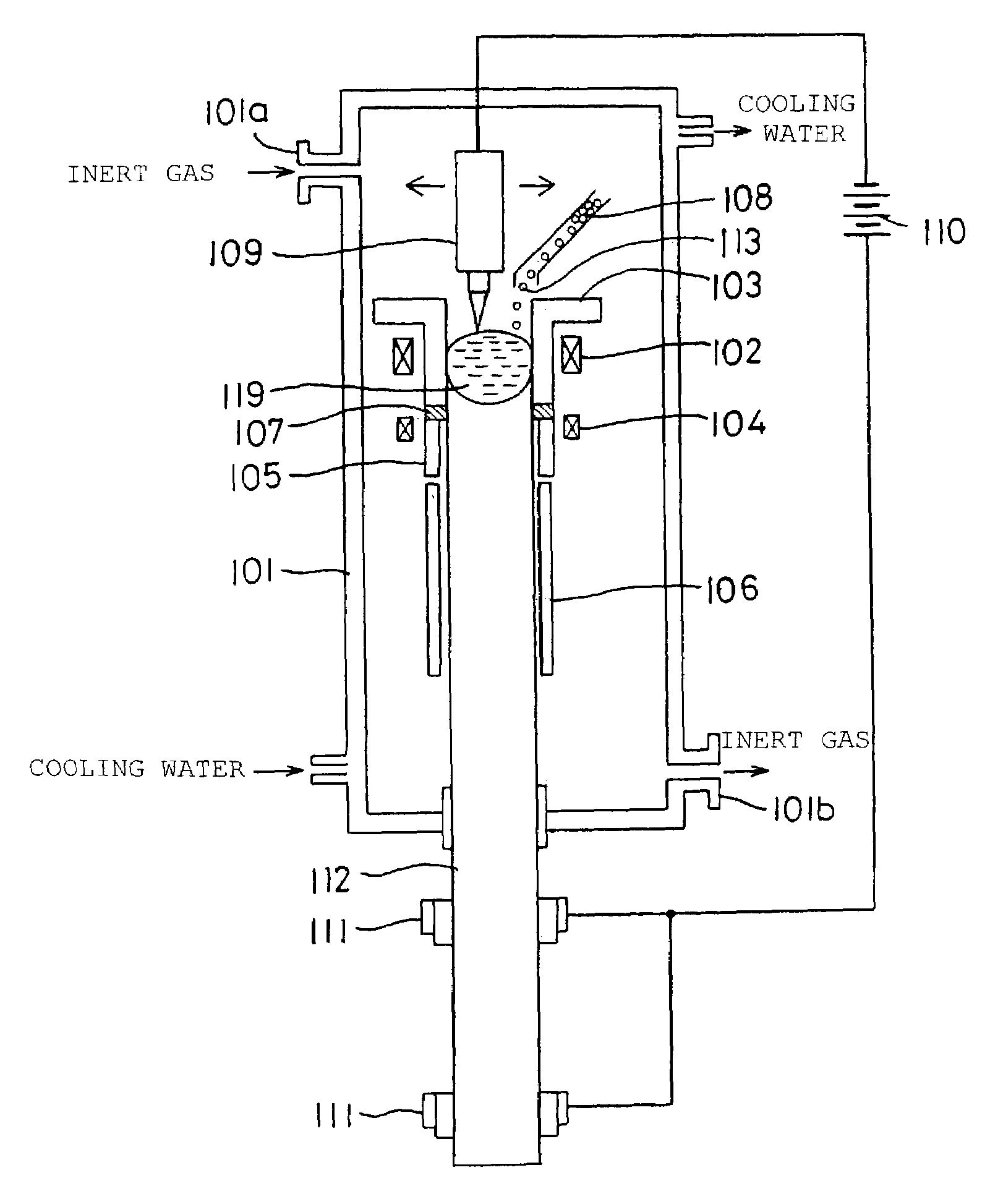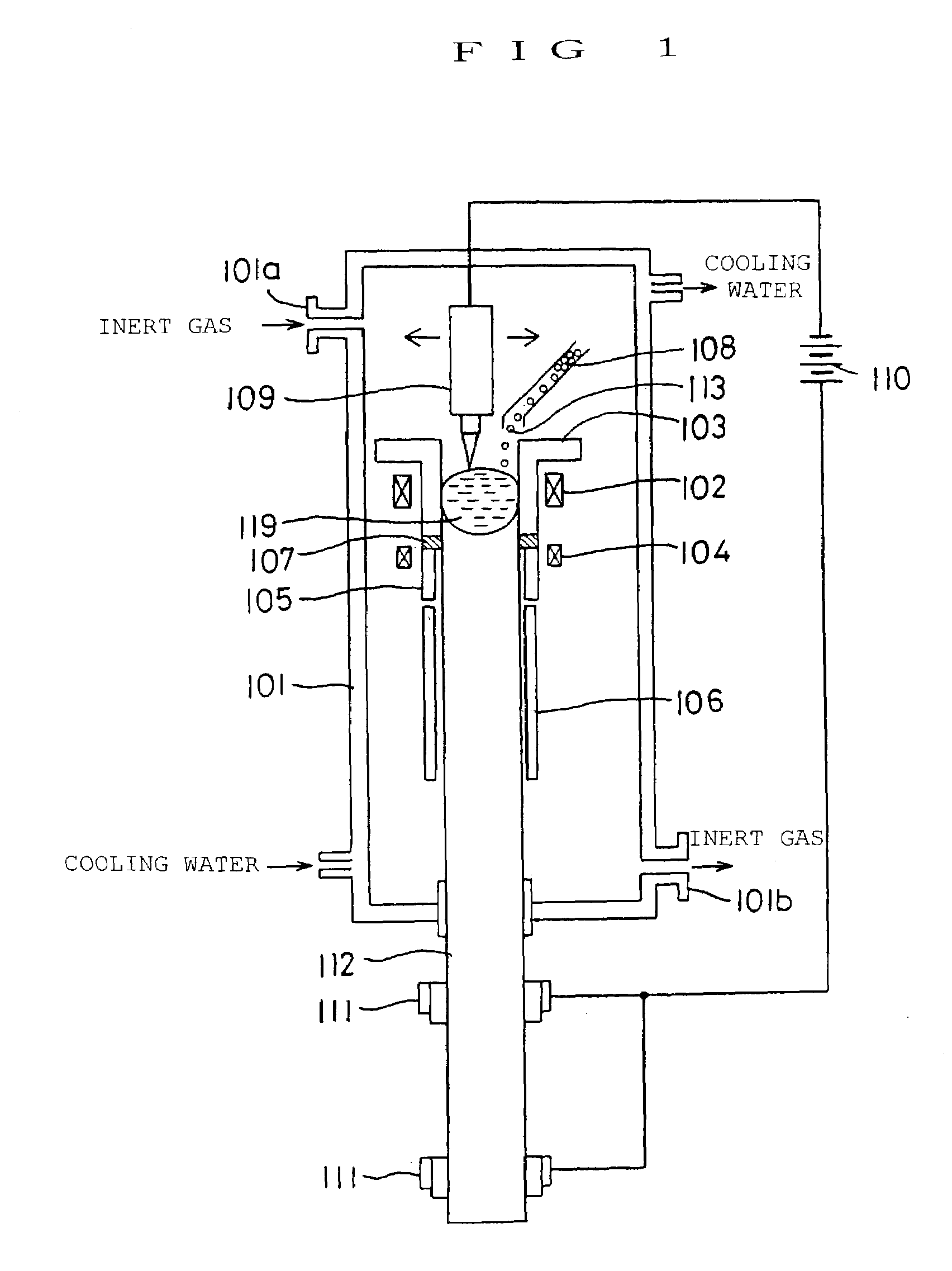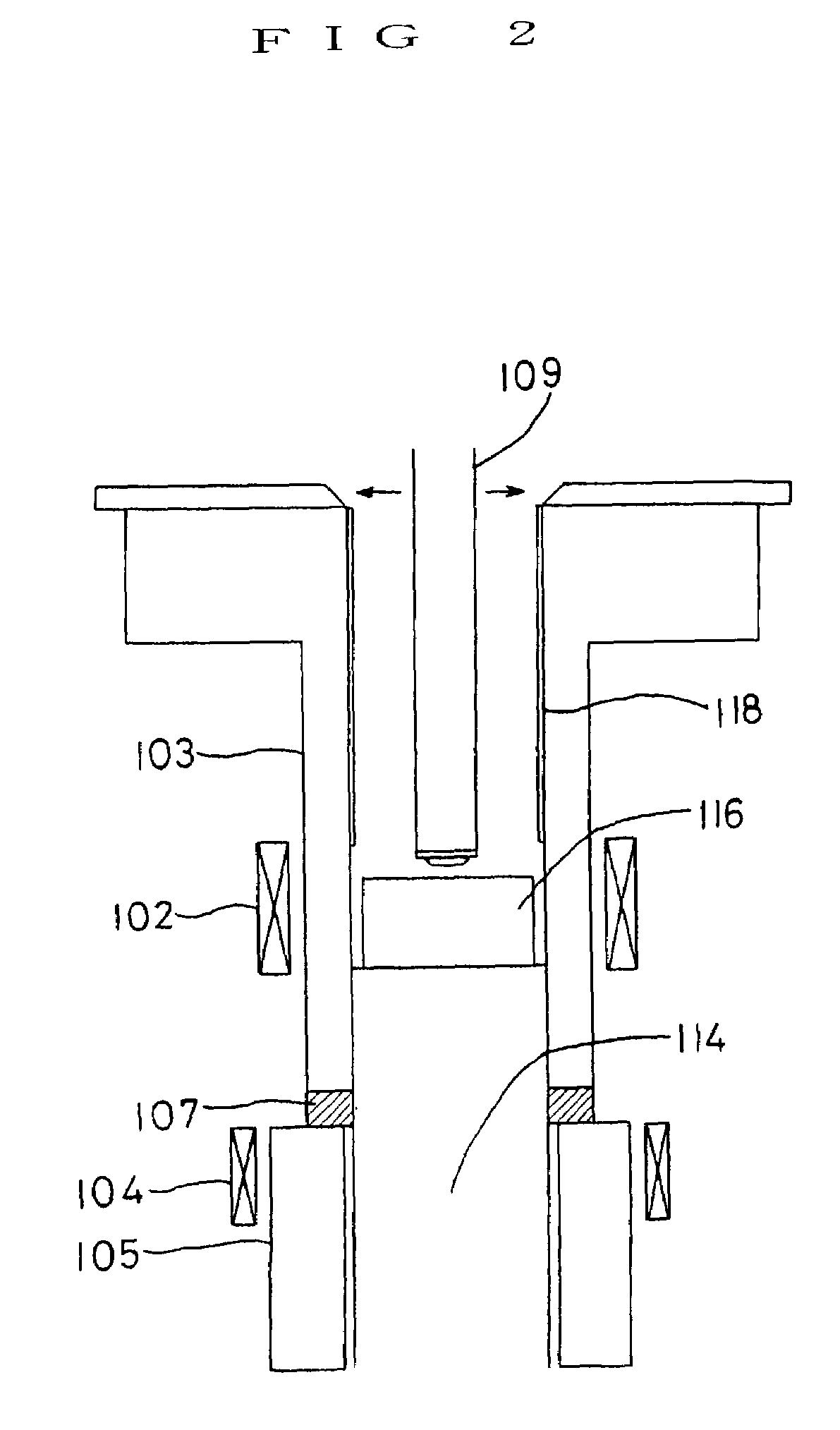Silicon continuous casting method
a casting method and silicon technology, applied in the direction of silicon compounds, polycrystalline material growth, manufacturing tools, etc., can solve the problems high cost of high-quality silicon raw materials, and leakage of melt materials
- Summary
- Abstract
- Description
- Claims
- Application Information
AI Technical Summary
Benefits of technology
Problems solved by technology
Method used
Image
Examples
Embodiment Construction
[0058]With reference now to the attached drawings, embodiments of the present invention will be explained below.
[0059]A first silicon continuous casting method of the present invention will be explained with reference to FIG. 1 to FIG. 9.
[0060]FIG. 1 is a block diagram of a continuous casting apparatus suitable for carrying out a first silicon continuous casting method of the present invention, FIG. 2 is a longitudinal cross-sectional view of the upper part of the apparatus showing an operation during initial melting, FIG. 3 is a longitudinal cross-sectional view of the upper part of the apparatus showing an operation during casting and FIG. 4 is an A—A line arrow view of FIG. 3.
[0061]As shown in FIG. 1, the continuous casting apparatus is provided with a chamber 101 to keep a casting atmosphere. To keep this casting atmosphere, an inert gas is circulated in the chamber 101 from a gas inlet 101a to a gas outlet 101b. Inside the chamber 101 is a square tubular bottomless crucible 103...
PUM
| Property | Measurement | Unit |
|---|---|---|
| temperature | aaaaa | aaaaa |
| temperature | aaaaa | aaaaa |
| melting point | aaaaa | aaaaa |
Abstract
Description
Claims
Application Information
 Login to View More
Login to View More - R&D
- Intellectual Property
- Life Sciences
- Materials
- Tech Scout
- Unparalleled Data Quality
- Higher Quality Content
- 60% Fewer Hallucinations
Browse by: Latest US Patents, China's latest patents, Technical Efficacy Thesaurus, Application Domain, Technology Topic, Popular Technical Reports.
© 2025 PatSnap. All rights reserved.Legal|Privacy policy|Modern Slavery Act Transparency Statement|Sitemap|About US| Contact US: help@patsnap.com



